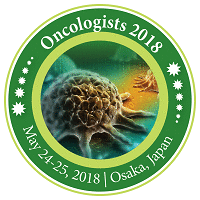
Jacob Gopas
Soroka University Medical Center, Israel
Title: Cellular Senescence in Hodgkin’s Lymphoma
Biography
Biography: Jacob Gopas
Abstract
Hodgkin’s Lymphoma (HL) is a B cell originated malignancy of the immune system. Although the rate of cure is high, about 20-35% of patients relapse and about half of them eventually die of the disease or treatment-related late toxicities and secondary malignancies. Conceptually novel treatment strategies are thus needed, particularly for this category of patients. The malignant cells, called Hodgkin and Reed-Sternberg (HRS) cells, only make up 1-2% of the total tumor cellularity, the remaining mass comprising a mixed infiltrate population is thought to be recruited to the lymph node by HRS-driven pro-inflammatory signals. We propose that a sub-population of HRS cells, which we call herein large RS cells, have characteristics of senescent cells, and, thus produce large amounts of inflammatory mediators (the so-called Senescence-Associated Secretory Phenotype or SASP). Senescence is characterized by permanent cell cycle arrest and loss of proliferative capacity, despite continued viability and metabolic activity. We show that the senescence markers the cell cycle inhibitors p16INK4a and p21Cip1 are expressed in large RS cells in all HL biopsies examined. Moreover, the large RS cells are negative for Ki-67 staining, demonstrating that these cells have ceased to proliferate. We also show that large, ‘RS-like’ cells in a HL-derived line, L428, stained for the characteristic senescence marker β-galactosidase (β-gal). Oxidative stress and chemotherapy increased the proportion of β-gal positive large RS cells. Furthermore, we show that the large RS cells secrete high levels of cytokines. We suggest that these senescent RS cells may be responsible, at least in part, for creating a pro-inflammatory microenvironment, promoting HL pathogenesis, and mediating chemoresistance in relapsed disease. Understanding the pathways important for the establishment of senescence in HRS cells, as well gaining insight into targetable mechanisms for the eradication of these cells, will provide new therapeutic approaches for HL patients with recurrent or chemo-resistant disease.

